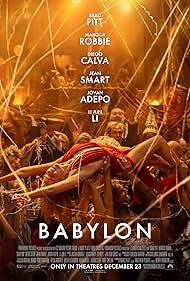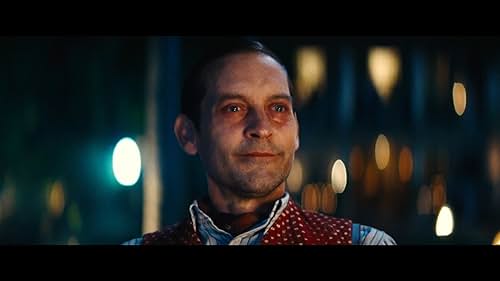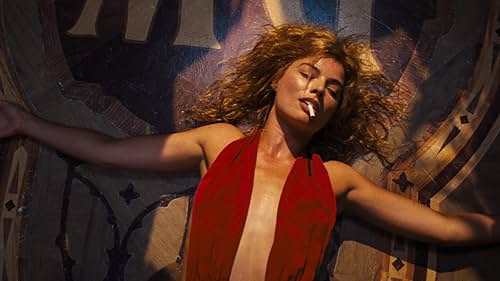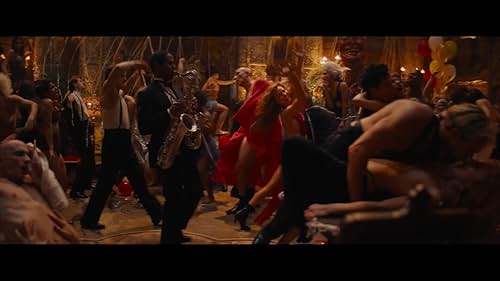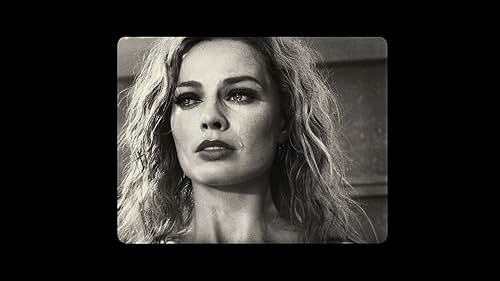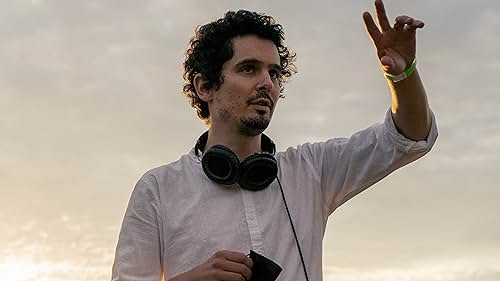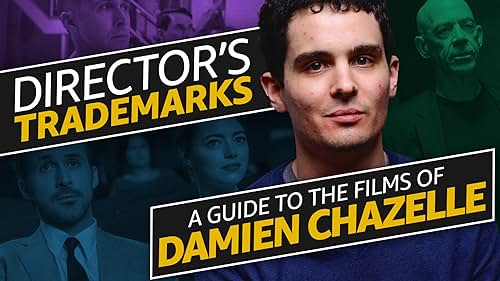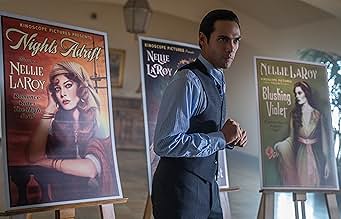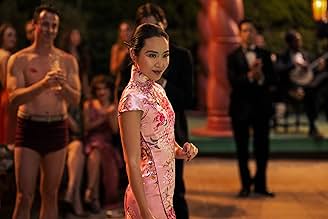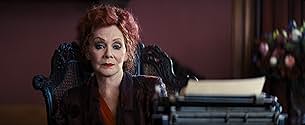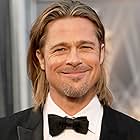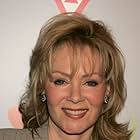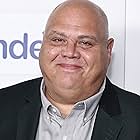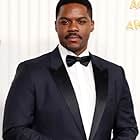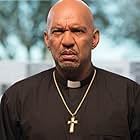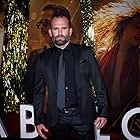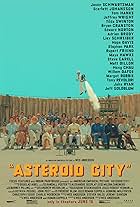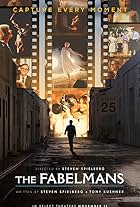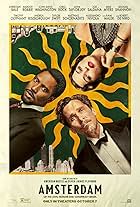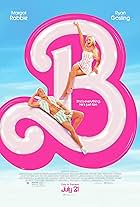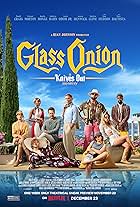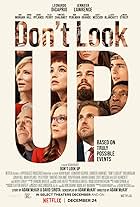A tale of outsized ambition and outrageous excess, it traces the rise and fall of multiple characters during an era of unbridled decadence and depravity in early Hollywood.A tale of outsized ambition and outrageous excess, it traces the rise and fall of multiple characters during an era of unbridled decadence and depravity in early Hollywood.A tale of outsized ambition and outrageous excess, it traces the rise and fall of multiple characters during an era of unbridled decadence and depravity in early Hollywood.
- Nominated for 3 Oscars
- 46 wins & 161 nominations total
J.C. Currais
- Truck Driver
- (as JC Currais)
Marcos A. Ferraez
- Police Officer
- (as Marcos Ferraez)
- Director
- Writer
- All cast & crew
- Production, box office & more at IMDbPro
Storyline
Did you know
- TriviaThe character of Lady Fay Zhu is loosely based on Anna May Wong (1905-1961) the first Chinese-American actress in Hollywood whose career spanned both silent and sound films.
- GoofsA "Jackass Forever" billboard appears in the 1952 epilogue.
- Quotes
[Jack finds George crying with his head in the toilet]
Jack Conrad: Aw, Georgie. Who was it this time?
George Munn: [panting] Claire.
Jack Conrad: Claire. Well, Claire's a lesbian. That's an uphill battle for anyone.
- Crazy creditsThe Paramount logo is the 1920s version, fitting the era the film is set in.
- Alternate versionsIn Singapore, before the film could passed with an R21 classification for theatrical release, the distributor required to remove a scene depicting a deviant sexual act in which the authority felt it has exceeded the classification guidelines which states that "any material that is about or promotes deviant sexual behavior" would be refused classification.
- ConnectionsFeatured in WatchMojo: Top 10 Best Movies of 2022 (2022)
- SoundtracksMy Girl's Pussy
Lyrics by Harry Roy
Music and additional lyrics by Justin Hurwitz
Performed by Li Jun Li
Featured review
"Babylon" tracks the career of Manny Torres, an aspiring filmmaker from Mexico who crosses paths with fellow aspiring starlet Nelly LaRoy at a bacchanalian party one night in 1920s Los Angeles. The film also follows several other characters at the same party, including movie star Jack Conrad, cabaret performer Fay Zhu, tabloid journalist Elinor St. John, and musician Sidney Palmer, as each rise and fall in their respective careers spanning the end of silent films and the beginning of sound productions; each of the characters cross paths throughout as they navigate the shifting business of Hollywood.
This large-scale epic from Damien Chazelle is, in a word, ambitious, both in scope and mere technicality. It opens with an utterly ravishing, debaucherous party sequence that captures the maddening spirit of roaring twenties Hollywood, setting a visual bar that is fairly high. While there are a number of fantastic sequences throughout the film, this key party sequence where each of the characters are introduced/first intervene is, without a doubt, the highlight of the film. While its characters are fictional, the screenplay blends them in with passing names of real-life historical Hollywood figures, as well as thinly-veiled references to others.
Firstly, it almost goes without saying that "Babylon" is gorgeously photographed. The performances are also uniformly solid. Diego Calva is a likable presence as the centerpiece character, while Margot Robbie's portrayal of the brash and troubled Jersey girl flying by the seat of her pants is comical and poignant by turns. Brad Pitt fittingly plays the drunken but goodhearted movie star, and Jean Smart is also a welcome presence as the curt and astute gossip columnist, ostensibly based on Louella Parsons (or a writer of her ilk).
The film is consciously over the top, at many points capturing the madcap spirit of something the late Ken Russell would have directed. Its first three quarters are particularly outstanding, and demonstrate the realities (and technicalities) of how the transition from silent films to motion picture talkies posed legitimate, career-altering (or more often, career-destroying) challenges for nearly everyone who was part of the business. Chazelle projects this theme to the audience in one memorable and protracted sequence in which Robbie's character (along with the sound man) struggles, fails, is interrupted, and struggles again to perform a simple one-page scene. The nuts and bolts of these logistical challenges in a then-fledgling industry are perhaps the most intriguing components of the story, highlighting just how vastly different (and more arduous) the process was of making a sound picture for the actors and filmmakers accustomed to the established ways.
By the time it reaches its final act, however, the viewer does get the sense that the project is beginning to implode under its own weight to some degree; the focus on certain characters ebbs and flows, and the film begins to lose some steam. It is revived somewhat by an insane sequence in which Torres and another crew member of his film studio (in an attempt to save LaRoy from reckless gambling decisions) cross paths with an eccentric crime boss played by Tobey Maguire, and journey into a subterranean gathering place for the city's debaucherous denizens, who have literally gone underground following the more reserved moral code of the 1930s. The garish and ghoulish sequence feels like a tour of Dante's Inferno (probably quite intentionally), and is almost more madcap than the opening party sequence.
The film grinds to a somewhat abrupt halt as each of the characters' lives and careers face further significant devastation in the last thirty minutes, and the sense of tragedy that one might expect to feel is strangely absent, perhaps because these characters are in and of themselves larger than life, even cartoonish at times; still, I felt that there was an emotional core missing as their stories are resolved. The film ends on a profoundly cynical note, showing Hollywood as a place that metaphorically devours its own, only to be constantly replenished by the unending stream of those who make pilgrimage there, seeking to etch their mark in the tapestry of cinema. The observation is astute, and the implications are splashed across the screen in a century-spanning montage of snippets from the earliest films to contemporary ones.
All in all, "Babylon" has many strong points: Mainly its visuals, sturdy performances, and focus on the industrial realities of early filmmaking that most 21st-century viewers would take for granted. It eventually grows a bit long in the tooth into its third hour, and loses some tenacity, but not enough so that the film entirely collapses in on itself (though it comes close). If nothing else, it earns its keep as an ambitious and scabrous love (and hate) letter to cinema. 8/10.
This large-scale epic from Damien Chazelle is, in a word, ambitious, both in scope and mere technicality. It opens with an utterly ravishing, debaucherous party sequence that captures the maddening spirit of roaring twenties Hollywood, setting a visual bar that is fairly high. While there are a number of fantastic sequences throughout the film, this key party sequence where each of the characters are introduced/first intervene is, without a doubt, the highlight of the film. While its characters are fictional, the screenplay blends them in with passing names of real-life historical Hollywood figures, as well as thinly-veiled references to others.
Firstly, it almost goes without saying that "Babylon" is gorgeously photographed. The performances are also uniformly solid. Diego Calva is a likable presence as the centerpiece character, while Margot Robbie's portrayal of the brash and troubled Jersey girl flying by the seat of her pants is comical and poignant by turns. Brad Pitt fittingly plays the drunken but goodhearted movie star, and Jean Smart is also a welcome presence as the curt and astute gossip columnist, ostensibly based on Louella Parsons (or a writer of her ilk).
The film is consciously over the top, at many points capturing the madcap spirit of something the late Ken Russell would have directed. Its first three quarters are particularly outstanding, and demonstrate the realities (and technicalities) of how the transition from silent films to motion picture talkies posed legitimate, career-altering (or more often, career-destroying) challenges for nearly everyone who was part of the business. Chazelle projects this theme to the audience in one memorable and protracted sequence in which Robbie's character (along with the sound man) struggles, fails, is interrupted, and struggles again to perform a simple one-page scene. The nuts and bolts of these logistical challenges in a then-fledgling industry are perhaps the most intriguing components of the story, highlighting just how vastly different (and more arduous) the process was of making a sound picture for the actors and filmmakers accustomed to the established ways.
By the time it reaches its final act, however, the viewer does get the sense that the project is beginning to implode under its own weight to some degree; the focus on certain characters ebbs and flows, and the film begins to lose some steam. It is revived somewhat by an insane sequence in which Torres and another crew member of his film studio (in an attempt to save LaRoy from reckless gambling decisions) cross paths with an eccentric crime boss played by Tobey Maguire, and journey into a subterranean gathering place for the city's debaucherous denizens, who have literally gone underground following the more reserved moral code of the 1930s. The garish and ghoulish sequence feels like a tour of Dante's Inferno (probably quite intentionally), and is almost more madcap than the opening party sequence.
The film grinds to a somewhat abrupt halt as each of the characters' lives and careers face further significant devastation in the last thirty minutes, and the sense of tragedy that one might expect to feel is strangely absent, perhaps because these characters are in and of themselves larger than life, even cartoonish at times; still, I felt that there was an emotional core missing as their stories are resolved. The film ends on a profoundly cynical note, showing Hollywood as a place that metaphorically devours its own, only to be constantly replenished by the unending stream of those who make pilgrimage there, seeking to etch their mark in the tapestry of cinema. The observation is astute, and the implications are splashed across the screen in a century-spanning montage of snippets from the earliest films to contemporary ones.
All in all, "Babylon" has many strong points: Mainly its visuals, sturdy performances, and focus on the industrial realities of early filmmaking that most 21st-century viewers would take for granted. It eventually grows a bit long in the tooth into its third hour, and loses some tenacity, but not enough so that the film entirely collapses in on itself (though it comes close). If nothing else, it earns its keep as an ambitious and scabrous love (and hate) letter to cinema. 8/10.
- drownsoda90
- Dec 22, 2022
- Permalink
- How long is Babylon?Powered by Alexa
Details
- Release date
- Country of origin
- Official sites
- Languages
- Also known as
- Vavilon
- Filming locations
- Production companies
- See more company credits at IMDbPro
Box office
- Budget
- $110,000,000 (estimated)
- Gross US & Canada
- $15,351,455
- Opening weekend US & Canada
- $3,603,368
- Dec 25, 2022
- Gross worldwide
- $64,960,676
- Runtime3 hours 9 minutes
- Color
- Sound mix
- Aspect ratio
- 2.39 : 1
Contribute to this page
Suggest an edit or add missing content
